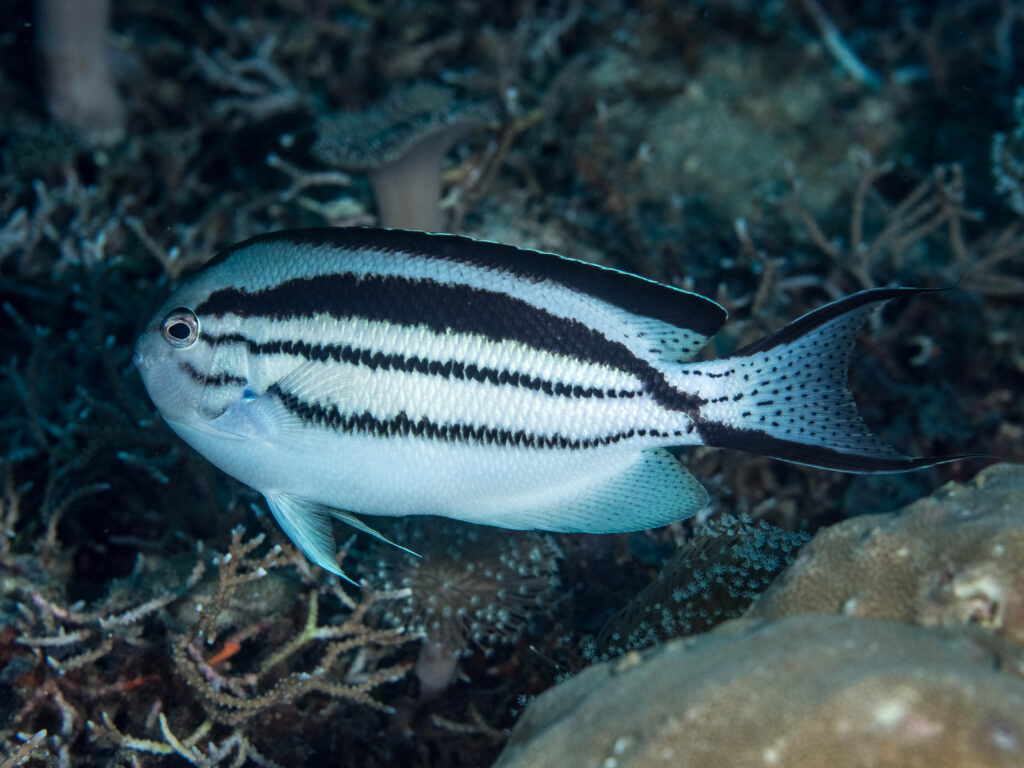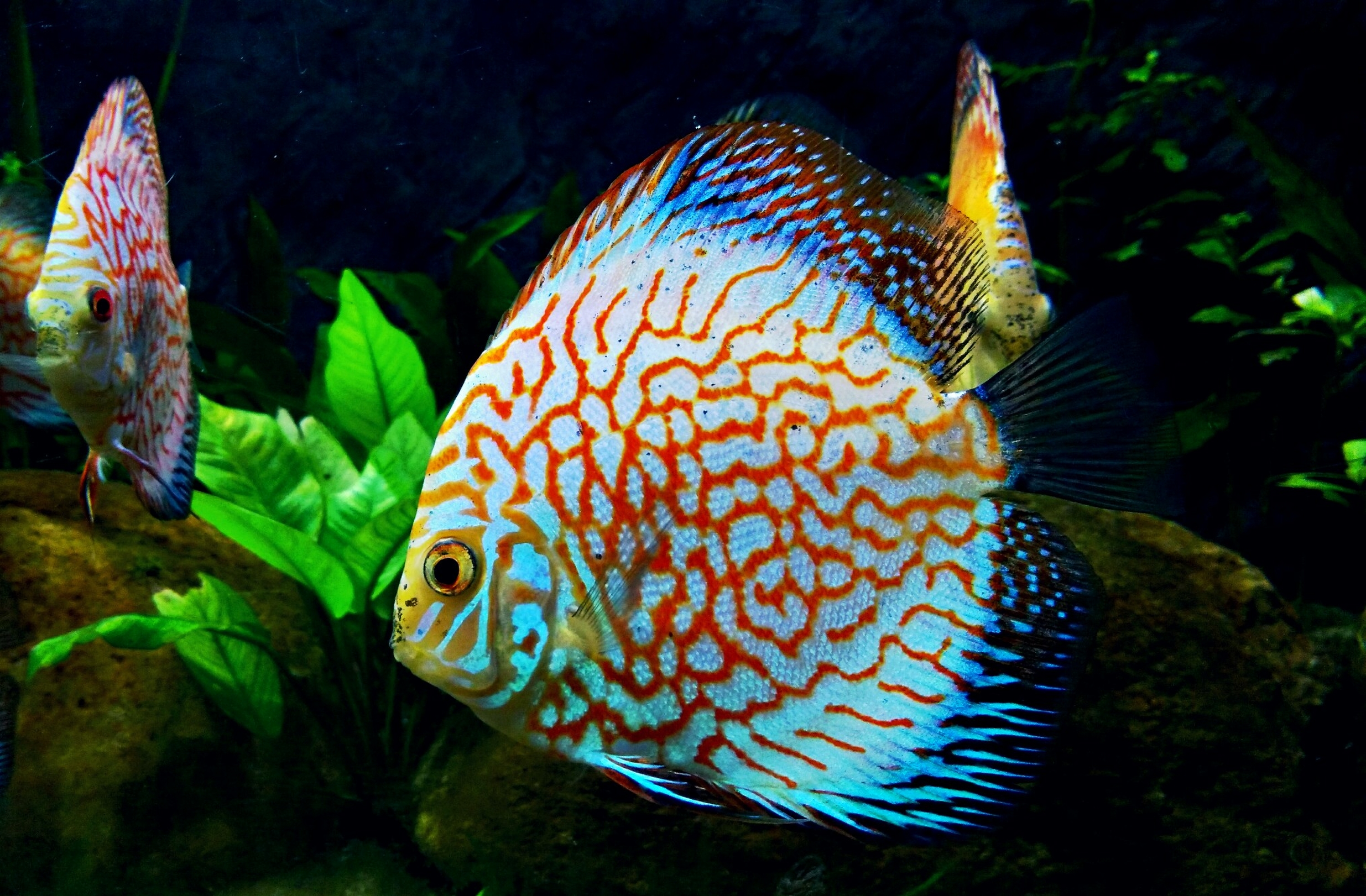When you want a new pair of angelfish or only one to pair with your current one, you will want to know which sex you will buy for the fish tank. Telling differences between male and female angelfish is not hard at all.
Whetther or not to breed to angelfishes in the future,knowing your pets in the aquarium is important.
In this article, you will read phsical and behavioral characteristics of the male and female angelfish. Most importantlyi please keep in mind that you can only see these differences when your fishes reach maturity.
By the end, you’ll have a clear understanding of how to identify the gender of your angelfish.
Physical Characteristics of Male Angelfish
Physical differences of the angelfish genders will be obvious when they reach seven months old.
Male angelfishes tend to be larger in shape usually. They also swim faster than the female angelfish.
You can easily identify male angelfish by their elongated dorsal and anal fins. The fin shape of male angelfish is one of the most noticeable differences between males and females.
The eye area of the male angelfish is more round than the female angelfish while his cloaca is much narrower
The dorsal fin of males is longer and more pointed compared to the rounded dorsal fin of females. Similarly, the anal fin of males is also elongated and pointed, while the anal fin of females is shorter and more rounded.
In terms of coloration, male angelfish often exhibit brighter and more vibrant colors compared to females. They may display bold stripes, intricate patterns, and vibrant hues of orange, yellow, and blue.
Males have a pointy, thin breeding tube for mating. This is obvious on their underside once they reach maturity.
These physical characteristics of male angelfish not only serve as a means of identification but also play a role in courtship and mating.
Physical Characteristics of Female Angelfish
To identify the gender of a female angelfish, observe the shape of her body and the presence of a small tube-like structure. Female angelfish tend to have a rounder and fuller body compared to males. They also have a small tube called an ovipositor, located near their ventral fin. This ovipositor is used for laying eggs during the breeding process.

Male and female angelfish show subtle differences in the shapes of their dorsal and ventral fins. The ventral fins of a male angelfish are jagged and divided, with a noticeable split towards the end of the fin. In contrast, a female’s ventral fins are sleek and curved, without any split.
In a tank filled with lush plants, a female angelfish glides through the water.
Regarding their dorsal fins, males and females also differ. The dorsal fin of a male angelfish is erect, almost perpendicular to the body. On the other hand, the dorsal fin of a female angelfish gently slopes backward.
In terms of size, female angelfish can grow to be around 6 inches in length, although some can reach up to 8 inches. Male angelfishes are slighlty bigger. You should compare the sizes when fishes are mature.
On the forehead section, Male angelfish has a nuchal hump or forehead section is more outward rounding where females do not have any hump or a slightly backward slope
As for coloration, females generally have a more subdued and less vibrant appearance compared to males. They often display a silver or gray base color with a hint of orange or yellow on their fins.
Female angelfish have a rounded, blunt-shaped ovipositor that is larger on their underside. This is far more obvious than the male’s breeding tube, too.
Related: How long do Angeldishes live?
Behavioral Differences Between Male and Female Angelfish
When observing the behavior of angelfish, keep in mind that males tend to be more territorial and aggressive towards other fish. This aggression is especially evident during breeding season when males fiercely defend their chosen territory.
Here are some key points to understand the behavioral differences between male and female angelfish:
- Aggression levels: Male angelfish display higher aggression levels compared to females, especially when defending their territory or protecting their eggs.
- Social interactions: Male angelfish engage in courtship behaviors to attract females, such as flaring their fins and displaying vibrant colors. Females, on the other hand, tend to be more passive and submissive during courtship.
- Pair bonding: Once a pair of angelfish form a bond, they exhibit strong social interactions, often swimming together and defending their territory as a team.
- Parental care: Both males and females participate in parenting duties, diligently guarding and tending to their eggs until they hatch.
- Hierarchy establishment: In a group of angelfish, males often establish a hierarchical order, with the dominant male being the most aggressive and territorial.
Understanding these behavioral differences can help fishkeepers create suitable environments for their angelfish and promote successful breeding.
Breeding Patterns and Reproductive Organs of Male and Female Angelfish
Breeding Angelfish at home is a viable option, provided that you maintain the water conditions they prefer and provide them with a nutritious diet. I have successfully bred Koi Angelfish in my community tank, although it was mostly luck that a male and female formed a breeding pair.
Angelfish can be quite selective when it comes to choosing a mate, so you can’t simply put any two individuals together and expect them to get along. They prefer to choose their own partners.
If you’re interested in breeding Angelfish, the easiest way to obtain a breeding pair is to purchase a group of juvenile fish and raise them together. As they mature and reach breeding age, they will naturally pair off.
To create a suitable environment for spawning, it’s important to set up a separate tank specifically for the breeding pair. Angelfish prefer to spawn in a tank without other fish that might bother or stress them. The water temperature in the tank should be maintained between 72° and 82° Fahrenheit. If your water is excessively hard or alkaline, it’s best to use RO or deionized water. Install a sponge filter in the spawning tank to keep the water clean, and perform partial water changes on a daily basis.
To make the fish feel more comfortable, consider painting the outside of the aquarium with a matte shade, especially if you don’t plan on using any substrate. Additionally, using a lid can help the Angelfish feel more secure and at ease. Stressed or anxious fish are less likely to breed.
Introducing dither fish into the tank might help relax the Angelfish. Dither fish are typically schooling fish that occupy the upper part of the water column, such as danios, barbs, or tetras. Many Angelfish breeders find that dither fish can prevent the male from becoming aggressive towards the female.
During the spawning process, it becomes easier to distinguish between the sexes. Both fish take turns cleaning and preparing the nest site, and they engage in flirtatious behavior, chasing each other around the tank.
When the female is ready to lay her eggs, her abdomen swells, and you’ll notice a short ovipositor tube appearing between her anal and ventral fins. She lays several hundred eggs in rows, which the male then fertilizes. Both fish take turns fanning the eggs and keeping them clean. Any unfertilized or dirty eggs should be removed.
After a few days, the eggs will hatch, and the Angelfish larvae will remain attached to the eggs via a sticky thread, deriving nutrition from the egg sac until they are large enough to swim freely as fry. Throughout this period, both the male and female Angelfish will care for the fry.
Tips for Identifying the Gender of Your Angelfish
You can easily identify the gender of your angelfish by observing their physical characteristics and behaviors. Here are some tips to help you determine the gender of your angelfish:
- Coloration differences in male and female angelfish: Male angelfish tend to have more vibrant and intense colors compared to females. Males often display brighter shades of orange, yellow, and blue, while females have a more subdued coloration.
- Size variations between male and female angelfish: Males are usually larger and more robust than females. They have a more elongated and triangular shape, while females have a rounder and shorter body.
- Fin shape: Male angelfish have longer and more pointed dorsal and anal fins, while females have shorter and rounder fins.
- Behavior: During breeding, males become more territorial and aggressive, while females tend to be more passive and submissive.
- Breeding tube: Only females have a small, pointed tube protruding near their vent, which is used for egg-laying.
Conclusion
In conclusion, identifying the gender of angelfish can be done by observing their physical characteristics, such as body shape and fin length.
Additionally, behavioral differences, such as territoriality and aggression, can also indicate the gender of these fish.
Breeding patterns and the presence of reproductive organs further confirm the gender.
By paying attention to these factors, fish enthusiasts can accurately determine whether their angelfish is male or female.

